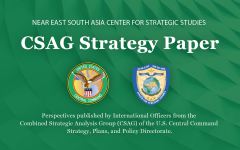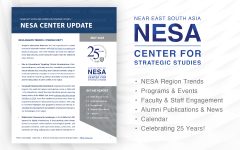Partnership for Global Infrastructure and Investment (PGII) A West’s Initiative to Uplift Developing Countries and Counter BRI
September 22, 2022 2022-09-22 23:43Partnership for Global Infrastructure and Investment (PGII) A West’s Initiative to Uplift Developing Countries and Counter BRI
Partnership for Global Infrastructure and Investment (PGII) A West’s Initiative to Uplift Developing Countries and Counter BRI
By: LTC Kashif Ehtisham, Pakistan Army, CSAG CCJ5
20 September 2022
Overview:
The US and China, the two major strategic competitors, are seeking engagements to establish ‘economic partnerships’ aimed at attaining greater influence/ leverage over certain countries/ regions. There have been intense activities globally in recent times, encompassing economic, political, and diplomatic measures, affecting international relations. The US dominated the period following World War II and China is relatively new to the game; however, the latter has made great strides in finding allies by utilizing its economic clout. This situation is forcing the US and other Western nations to innovate and take initiatives to counter growing Chinese influence. The world’s wealthiest economies, through the PGII initiative, plan to address the needs of developing countries and counter China’s economic influence. It is just a rebranding and an official launch of what had been rolled out at the G7 meeting in the UK in 2021 as “Build Back Better World” (B3W). PGII is a value-oriented, high-standard, and transparent infrastructure partnership that aims to help narrow the infrastructure gap of over 40 trillion USD in the developing world. As a lead partner in PGII, the US will seek to mobilize the full potential of development finance tools, including the Development Finance Corporation, USAID, EXIM, the Millennium Challenge Corporation, and the US Trade and Development Agency. Together with the G7 partners, the US aims to mobilize $600 billion in global infrastructure investments by 2027.
Key Points:
- PGII is aimed to deliver game-changing projects to close infrastructure gaps in developing countries; it conforms with the Biden administration’s new strategy, involving elements of ‘invest, align and compete’. This new approach is viewed to deter growing Chinese influence, however it is entirely contingent upon availability of funds and cooperation amongst G7 countries.
- Analyzing the criticality of the ‘decisive decade’ for US, involving a critical pyramid of time, relative investment benefits and essential countries (selected countries for investment), a delayed conception of PGII vis-à-vis continual advance of BRI poses an uphill task to achieve desired benefits.
- Analysts counts PGII as a prospect for US and the West to showcase their renewed endeavor/strategy, shifting from a disruptive to a cooperative approach, affording US and the West ‘greater global stature’ and ‘reliability’.
- Contiguous region of CASA, ME, and Caucasus is termed as ‘decisive region’ for strategic competitors; PGII affords US/ the West ability to invest in under bellies of China and Russia.
- Critics analyses that with formation of PGII in parallel to BRI may help in uplifting the ‘quality of life’ of masses as mega projects are expected to start under the banner of PGII.
- China welcomes PGII to promote global infrastructure development, highlighting that one initiative should not replace another. However, it opposes the use of the name infrastructure to promote geopolitical schemes.
View other USCENTCOM Combined Strategic Analysis Group (CSAG) papers here.
The opinions and conclusions expressed herein are those of a number of international officers within the Combined Strategic Analysis Group (CSAG) and do not necessarily reflect the views of United States Central Command, not of the nations represented within the CSAG or any other governmental agency.







